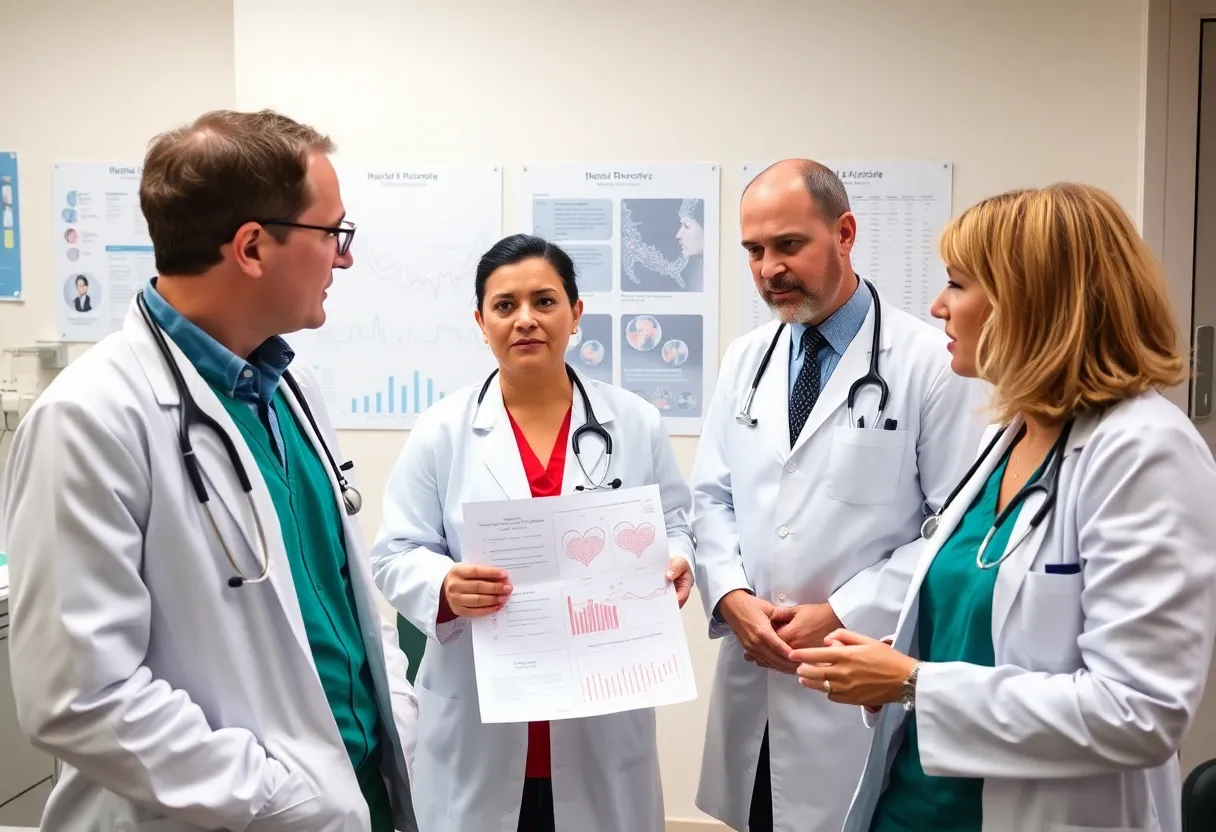News Summary
A groundbreaking study across 12 hospitals in Spain reveals HER2DX’s potential to personalize treatment for HER2-positive breast cancer, reducing intensity in 75.5% of cases.
HER2DX Study Revolutionizes Treatment Paradigms in HER2-positive Breast Cancer
The landscape of HER2-positive breast cancer treatment is undergoing a significant transformation, as evidenced by a groundbreaking clinical utility study conducted across 12 hospitals in Spain. Over the course of nearly three years, this extensive research evaluated nearly 300 patients and laid the groundwork for more personalized and less intensive treatment plans.
Significant Findings from the Clinical Utility Study
The results are nothing short of impressive. The study found that HER2DX, a novel diagnostic test tailored specifically for patients with HER2-positive breast cancer, successfully guided treatment modifications in approximately 48.1% of cases. This is a remarkable achievement, considering the intricacies of breast cancer treatments and the variability in patient responses.
Among the changes made, a substantial 75.5% of treatment modifications involved reducing treatment intensity. This reduction is significant, particularly for patients who would traditionally undergo grueling regimens involving intensive chemotherapy or anti-HER2 therapy. The study strongly indicates that these changes did not compromise outcomes for patients, shedding light on a new, less arduous path forward.
Exploring Treatment Modifications
The pivotal findings of the study revealed that 56.2% of adjustments dictated by HER2DX pertained to chemotherapy reduction. Additionally, 26.7% of the changes involved a decrease in anti-HER2 therapy, while 17.1% included both modifications. This data underlines the effective role HER2DX plays in identifying patients who could safely receive less aggressive treatment without sacrificing efficacy.
Pathologic Complete Response and Predictive Accuracy
One of the most compelling elements of the HER2DX study is its ability to accurately predict the likelihood of achieving a pathologic complete response (pCR). This pCR likelihood score correlated significantly with patient outcomes, as those categorized as having pCR-high disease achieved an impressive pCR rate of 81.5% with less intensive treatment regimens. Comparatively, traditional multi-agent chemotherapy resulted in a 69.0% pCR rate. The implications are profound, highlighting that patients can achieve equally favorable outcomes while experiencing less treatment-related stress.
Boosting Physician Confidence and Economic Benefits
The impact of the HER2DX test extends beyond just patient outcomes; it also bolsters physician confidence in treatment decisions. With a statistically significant increase in physician assurance (P <.001), the study not only nurtures better treatment dynamics but also prompts notable economic advantages. The potential cost savings from employing HER2DX are estimated at an impressive €98,031, taking into account expenses associated with drugs, vein access devices, and the cost of HER2DX testing.
Profile of Study Participants
Diving into the demographic data, the median age of the 304 participants—post-exclusion of seven who were reclassified as HER2-negative—was 54 years. Most patients presented with stage II disease (broadly affecting 54.2%) and about 40% had some level of nodal involvement. Additionally, 61.3% of tumors assessed were hormone receptor-positive, highlighting a diverse cohort.
Future Directions in HER2DX Research
This study marks a pivotal moment as it is the first to prospectively validate the use of the HER2DX pCR likelihood score for selecting patients eligible for a short, targeted 3-month therapy regimen involving single-agent taxane-based chemotherapy. The implications of these findings set a robust foundation for future research endeavors, calling for extended follow-up studies and thorough cost-effectiveness analyses to completely elucidate the role HER2DX could play in standard treatment protocols for HER2-positive breast cancer.
In conclusion, the emergence of HER2DX is reshaping treatment strategies, offering hope for patients to receive more tailored and less demanding therapies while ensuring effective outcomes. As the medical community embraces these findings, the future of HER2-positive breast cancer management looks increasingly optimistic.
Deeper Dive: News & Info About This Topic
HERE Resources
Shipyard Worker Fights Asbestos Exposure in Court
The Asbestos Market: An Unfolding Story of Opportunity and Challenge
Residents of Li’l Abner Mobile Home Park Face Urgent Relocation Amid Asbestos Concerns
Coldwater City Council Takes Major Steps to Tackle Asbestos Concerns
The Ongoing Battle Against Asbestos: A Toxic Legacy in the U.S.
Asbestos Discovery Sparks Safety Concerns at Virginia Elementary School
Innovative Asbestos Recycling Could Transform Waste Management
How to Support a Loved One with Mesothelioma
Urgent Call to Action: Mesothelioma Research at Risk!
Game-Changer for Cancer Survivors: Pickleball at Moffitt Cancer Center



















